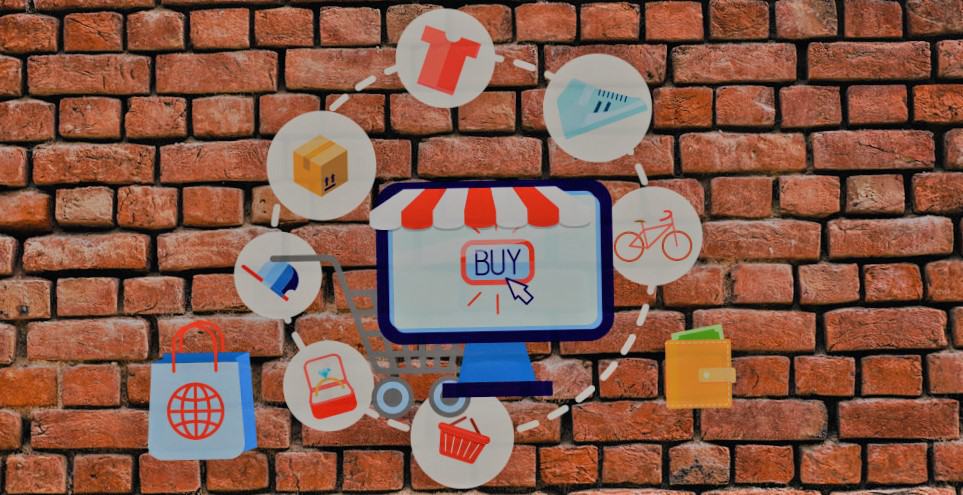E-commerce Goes Hand In Hand With Brick And Mortar
John Furrier | Last Updated : December 8, 2021When we look back, it was just a short while ago that Ecommerce crept into our lives unknowingly. But over the years it has changed our day-to-day shopping habits so drastically that now it seems almost impossible to live without it. This e-commerce boom has completely changed the way people shop. In fact, in many cases, it has had a deleterious effect on in-store sales.
Brick-And-Mortar Stores And Ecommerce Go Hand In Hand
Last year, i.e., 2020 saw a mere 3 to 4 percent jump for brick-and-mortar sales and a remarkable 15 percent jump for online or e-commerce sales. With these figures and news of retailers closing their physical locations, it is evident that brick-and-mortar is bound to be doomed.

Today, many e-commerce giants have set high standards for customers in terms of consumer experience. Suddenly, instant access to conveniences like product search, product reviews, live inventory availability, and personalized recommendations are just a few clicks away. Still some surveys show that around 70 percent of people till today prefer to shop in-store. So if shopkeepers change their style of selling, or in other words, if they incorporate digitized ways of selling their products, they will be able to face the challenges of online shopping.
Below are given some such changes that shopkeepers can make.
Engaging consumers of all generations
The ubiquitous availability of mobile phones, access to high-speed internet, and social media’s popularity have drastically changed the shopping habits of people worldwide.
If they adopt the omnichannel approach the shopkeepers can nurture their loyal customers and thus create an unending physical-digital experience for them. For example, brick-and-mortar shops can cater to their chain of customers by upselling and cross-selling through an email marketing campaign. Besides, they can also take the help from online tactics like reminder emails to customers to reorder a product previously bought by them. Furthermore, after making a purchase in-store, shopkeepers can encourage their customers to visit the brand website and post a review or gain access to after-sale services offered there.
Reaching a wider audience
Shopkeepers should realize that their online presence opens their business to a whole new variety of channels – online marketplaces, social media shopping, website sales, retail partners, and influencer marketing.
Getting more sales
If shopkeepers broaden their reach, their sales are bound to increase. If they digitize, then many more people will buy their products who otherwise may not have access to the local store.
Accessing customer insights
If anyone has an e-commerce store, it allows him to monitor his customers’ buying patterns and behavior and shopping trends too. This way he can update his inventory and stay ahead of the curve.
Making it seamless
It is really a tough job for a shopkeeper combining all sales channels, but if it results in increased sales manyfold, it is worth taking pains. If customers are able to hop from one channel to another effortlessly and seamlessly and continue receiving the same level of service at any touchpoint they choose to shop from they tend to become loyal customers. These are some of the different ways to blur the line between physical and digital retail: thereby giving shoppers the various options to check availability online and then buy in-store, bringing technology in-store via mobile phones, or offering wonderful in-store experiences.
Conclusion
Today though technology has become an integral part of human lives, all still feel the requirement to interact with people and things and be an important part of engaging experiences. That is the reason why customers prefer coming to a brick-and-mortar store to feel a product and enjoy the tactile experiences in these stores.
The insights and trends today clearly indicate that omnichannel retail is nowhere to stay for a long time. Rather than opposing this trend, they should work on a way to mix physical and digital retail to keep their customers engaged, thereby gaining an edge over competitors, and boosting profits.
John Furrier is a techie with expertise in BlockChain, eCommerce. He has been working on the cutting-edge of technology for over 10 years. His work has earned him recognition as an emerging leader in this field for various magazines. He lives to break new ground and find ways to make things more efficient for his clients. John believes that “Successful people are always looking for creative solutions.”